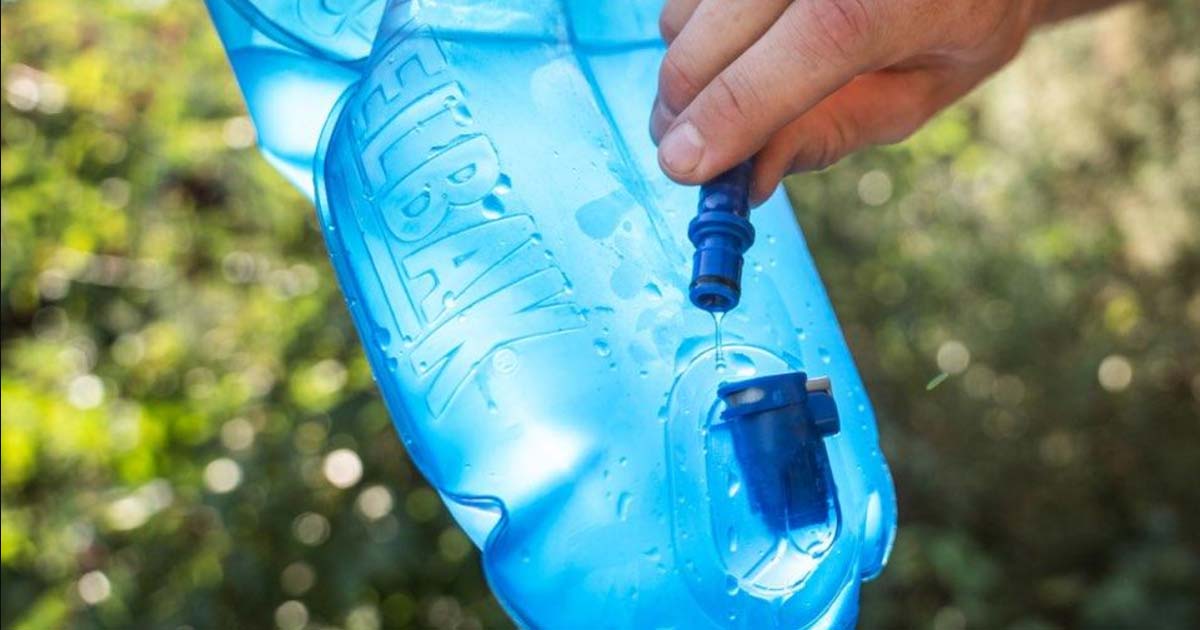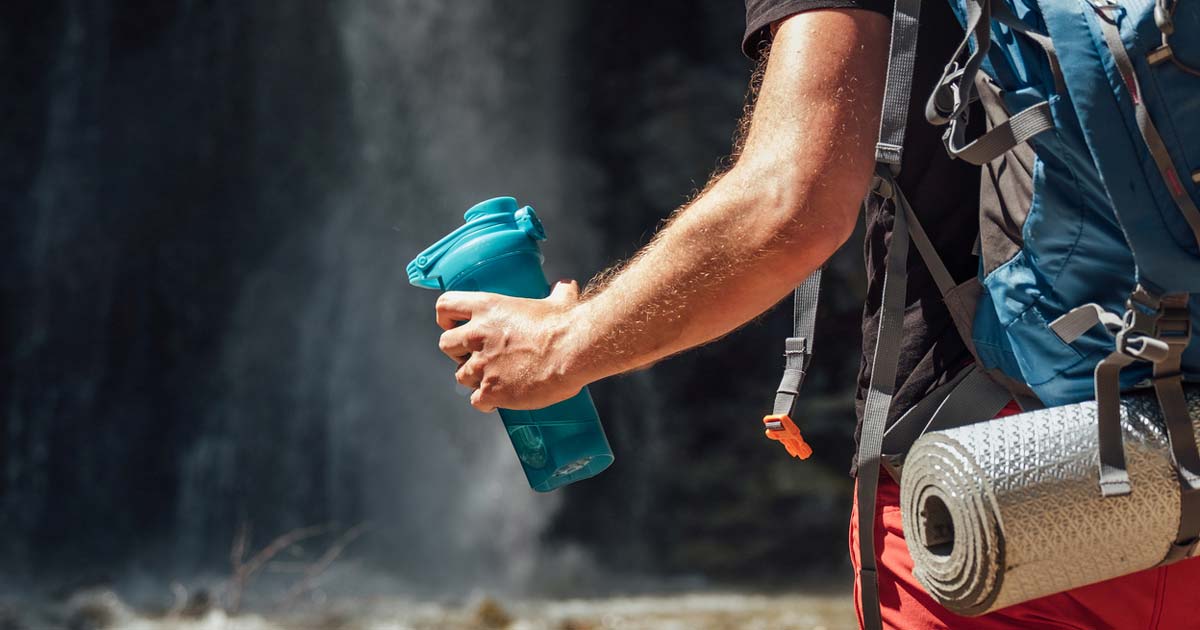When preparing for a hiking adventure, one essential item to consider is how to stay hydrated on the trail. Hiking requires physical exertion, and staying properly hydrated is crucial for maintaining energy levels, preventing dehydration, and enjoying a safe and comfortable outdoor experience. When it comes to carrying water on the trail, there are two popular options: hydration bladders and water bottles. In this post, I’ll explore the pros and cons of each to help you decide which is better for your hiking needs.

Hydration bladders: Convenient hydration on-the-go
Hydration bladders, also known as hydration reservoirs, are flexible plastic bags that fit inside a backpack and come with a drinking tube connected to them. They allow hikers to drink water without having to stop and open a water bottle. Here are some potential advantages of using hydration bladders for hiking:
- Easy access to water: With a hydration bladder, hikers can drink water while on the move without stopping or taking off their backpack. This can be convenient, especially during high-intensity activities or when hiking in a group where frequent stops may not be desirable.
- Large capacity: Hydration bladders typically have a larger water capacity compared to most water bottles, ranging from 1.5 to 3 liters or more. This can be beneficial for long hikes in remote areas where water sources may be scarce and hikers need to carry ample water with them.
- Even water distribution: Hydration bladders are designed to distribute water weight evenly on the back, which can help with balance and comfort while hiking, especially on uneven terrain. This can be advantageous for maintaining stability and reducing strain on the shoulders and back.
- Hands-free operation: The drinking tube of a hydration bladder allows hikers to drink water without using their hands, which can be convenient when hiking or engaging in other activities that require the use of hands, such as using trekking poles or navigating rugged trails.
However, there are some potential disadvantages of using hydration bladders as well:
- Cleaning and maintenance: Hydration bladders can be more challenging to clean compared to water bottles due to their complex design, including the drinking tube and mouthpiece. Proper cleaning and drying are essential to prevent mold, mildew, and unpleasant tastes or odors from developing.
- Monitoring water intake: Unlike water bottles, it can be challenging to visually monitor how much water is left in a hydration bladder, making it harder to keep track of water intake and plan accordingly. This can be a potential drawback for hikers who need to monitor their hydration levels closely.
- Durability and potential leakage: Although rare, hydration bladders can potentially leak or burst if not handled properly or if the drinking tube is not secured properly. This can result in water loss, damage to gear, or discomfort during the hike. I’ve had a bladder puncture in my pack when a small stick that had made its way into my pack, poked through the bottom of the bladder.

Water bottles: Durability and versatility
Water bottles are a classic choice for carrying water on hikes and have been used for generations. They come in various materials, including stainless steel, hard plastic, or even collapsible silicone, and offer some distinct advantages:
- Durability: Water bottles are typically made of durable materials that can withstand rough handling and resist damage from impacts, making them more durable compared to hydration bladders. They are less prone to punctures or tears, making them reliable for rugged hiking adventures.
- Diversity of supply: Carrying your water in multiple bottles can provide additional ‘water security’. If one bottle is to break, you can be confident you still have some water left. Unlike putting liters in your hydration bladder only to find you’ve lost the lot as a result of a bladder failure.
- Ease of use: Water bottles are simple to use and do not require any additional equipment like hoses or mouthpieces. They are easy to clean, and their wide openings make them easy to refill from various water sources, such as streams, rivers, or water fountains.
- Versatility: Water bottles are not limited to just carrying water. They can also be used for carrying other beverages, such as sports drinks, tea, or even hot beverages like coffee or soup, depending on the material of the bottle. This versatility can be appealing to hikers who may want to carry different types of drinks or use the bottle for other purposes during their hike.
- Visual monitoring: Unlike hydration bladders, water bottles allow hikers to visually monitor how much water is left, making it easier to track their hydration levels and plan accordingly. This can be helpful for hikers who need to closely monitor their water intake for safety reasons.
- Leak-proof: Water bottles are typically designed to be leak-proof, which means there is minimal risk of water leakage during the hike. This can help prevent water damage to gear, keep other items in the backpack dry, and ensure that hikers have enough water throughout their journey.
However, there are also some potential disadvantages of using water bottles for hiking:
- Limited capacity: Most water bottles have smaller capacities compared to hydration bladders, typically ranging from 500ml to 1 liter. This may not be sufficient for longer hikes or hikes in remote areas where water sources may be scarce, and hikers may need to carry additional water bottles or find water sources along the way.
- Inconvenience of stopping: Unlike hydration bladders, using water bottles requires hikers to stop and take off their backpack to access the water. This can be less convenient and time-consuming, especially during high-intensity activities or when hiking in a group where frequent stops may not be desirable.
- Uneven weight distribution: Water bottles can create an uneven weight distribution in the backpack, especially if hikers carry multiple bottles or place them in different pockets. This can affect balance and comfort while hiking, especially on uneven terrain, and may require hikers to adjust their backpacks accordingly.
Which is better?
The choice between hydration bladders and water bottles for hiking ultimately depends on personal preference and the specific needs of the hike. Hydration bladders offer the convenience of easy access to water while on the move, larger capacities, and hands-free operation, but they may require more cleaning and maintenance and may be harder to monitor water intake. On the other hand, water bottles are durable, versatile, easy to use and clean, but may have smaller capacities and require hikers to stop to access water.
Some hikers may prefer hydration bladders for their convenience and capacity, while others may opt for water bottles for their durability and versatility. It may also be a matter of personal comfort and familiarity with either option. Hikers should consider their hiking style, duration of the hike, water availability, and personal preferences when choosing between hydration bladders and water bottles for their hiking adventures.
Both hydration bladders and water bottles have their pros and cons, and the better option for hiking depends on individual preferences and specific hiking needs. It’s important to stay hydrated during hiking adventures, regardless of the method chosen, and to always carry enough water to ensure safety and comfort on the trail.








I don’t really have a favourite. Tend to swap between both depending on the hike. Sometimes I’ll even carry both.
Darren Edwards Same. Hydration bladders when on the move. Bottles for everything else.
Darren Edwards definitely both on an overnight hike. Not easy pouring water into a pot out of a hydration bladder 😆
A warm day or tough hike I take both which comes then to about 3.5-4l of water. I find the bladder good whilst on the go and the bottle good for when the pack is off for breaks. During the summer months I also keep an esky in the car with another bottle of water for the trip home
Liz Owen the esky is a very wise idea.
I take a bottle for short moderate grade hikes, say less than 2 hours. On longer hikes or hot days, I’ll use a bladder.
For me, on day hikes usually the bladder will do (I tend to top up my 3-ltr cause…habits).
Anything overnight, definitely will have extra bottles and/or wide mouth flexible containers.
So much easier to cook, make beverages, replenish from taps or streams, and purify.